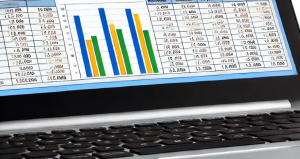In today’s competitive business landscape, accurate financial projections are the compass that guides companies toward sustainable growth and profitability. Excel templates have emerged as indispensable tools for creating these roadmaps, offering a powerful combination of flexibility, functionality, and accessibility. This article delves into the world of Excel templates for financial projections, exploring their benefits, essential components, and best practices for maximizing their value.
The Power of Excel Templates
Excel templates provide a structured framework for building comprehensive financial models, saving time, and reducing errors in the process. By automating calculations and generating visual representations of data, these templates empower businesses to make informed decisions based on solid financial analysis. Here are some key advantages of using Excel templates for financial projections:
- Time Efficiency: Pre-built templates eliminate the need to create financial models from scratch, allowing businesses to focus on analysis rather than setup.
- Consistency: Templates ensure a standardized approach to financial modeling across an organization, facilitating easier comparison and consolidation of data.
- Reduced Errors: Built-in formulas and data validation features minimize the risk of calculation errors and inconsistencies.
- Flexibility: Excel templates can be easily customized to meet specific business needs and adapt to changing requirements.
- Collaboration: Many templates support multi-user access, enabling team members to work together on financial projections.
- Cost-Effective: Compared to specialized financial modeling software, Excel templates offer a more affordable solution for many businesses.
Essential Components of a Financial Projection Template
A robust Excel template for financial projections should include the following core elements:
- Income Statement: This projects revenue, expenses, and net income over a specific period, typically on a monthly or quarterly basis for the first year and annually for subsequent years.
- Balance Sheet: The balance sheet displays assets, liabilities, and equity at particular points in time, providing a snapshot of the company’s financial position.
- Cash Flow Statement: This crucial component tracks the inflow and outflow of cash, helping businesses anticipate and manage liquidity.
- Sales Forecast: A detailed projection of future sales based on market trends, historical data, and growth assumptions.
- Expense Budget: An outline of anticipated costs for various business operations, including fixed and variable expenses.
- Break-Even Analysis: This tool helps determine the sales volume required to cover costs and start generating profits.
- Sensitivity Analysis: Allows users to evaluate the impact of changes in key variables on overall financial performance.
- Key Performance Indicators (KPIs): A dashboard of important financial metrics such as gross margin, net profit margin, and return on investment.
Advanced Features for Enhanced Insights
To unlock the full potential of Excel templates, consider incorporating these advanced features:
- Scenario Planning: Create multiple financial projections based on different assumptions (e.g., best-case, worst-case, and most likely scenarios).
- Data Visualization: Utilize charts, graphs, and pivot tables to communicate financial information effectively and identify trends.
- Macros and Automation: Implement Visual Basic for Applications (VBA) macros to automate repetitive tasks and enhance functionality.
- Monte Carlo Simulation: Incorporate probabilistic modeling to account for uncertainty in financial projections.
- Integration Capabilities: Connect Excel with accounting software, CRM systems, and other data sources for seamless data transfer and real-time updates.
Choosing the Right Template
Selecting the appropriate Excel template is crucial for accurate financial modeling. Consider the following factors when making your choice:
- Business Size and Industry: Choose a template tailored to your specific sector and company scale.
- Level of Detail Required: Opt for a template with the necessary complexity to capture your business’s financial intricacies.
- Customization Options: Select a template that can be easily adapted to your unique business model and reporting requirements.
- User-Friendliness: Ensure the template is intuitive and can be used effectively by team members with varying levels of Excel proficiency.
- Support and Documentation: Look for templates that come with comprehensive documentation and customer support.
Tips for Effective Financial Modeling
To create reliable and insightful financial projections, follow these best practices:
- Gather Accurate Data: Collect reliable information on past performance, market trends, and industry benchmarks to inform your projections.
- Use Clear and Consistent Formulas: Ensure accurate calculations by using well-structured and documented formulas throughout your model.
- Regularly Review and Update: Keep financial projections current by incorporating new data and adjusting assumptions as market conditions change.
- Perform Sensitivity Analysis: Assess the impact of different scenarios on financial performance to prepare for various outcomes.
- Utilize Data Validation: Implement data validation rules to prevent errors and ensure consistency in data entry.
- Document Assumptions: Clearly state and explain all assumptions underlying your financial projections to provide context for decision-makers.
- Seek Expert Input: Consult with financial advisors or Premier business plan writers to validate your projections and identify areas for improvement.
The Future of Excel Templates
As technology continues to evolve, Excel templates are becoming increasingly sophisticated. Here are some trends shaping the future of financial modeling:
- AI-Powered Features: Machine learning algorithms are being integrated into Excel to provide more accurate forecasting and anomaly detection.
- Cloud-Based Collaboration: Online versions of Excel are enhancing real-time collaboration and data-sharing capabilities.
- Advanced Analytics: New add-ins and features are bringing powerful business intelligence tools directly into Excel spreadsheets.
- Mobile Accessibility: Improved mobile apps are making it easier to view and edit financial projections on the go.
- Automated Data Feeds: Integration with external data sources is becoming more seamless, allowing for real-time updates to financial models.
Conclusion
Excel templates have revolutionized the way businesses approach financial projections, offering a powerful and accessible tool for companies of all sizes. By understanding the essential components, leveraging advanced features, and following best practices, you can create accurate and insightful financial projections that inform strategic decision-making and drive business growth.
As you embark on your financial modeling journey, remember that the true value of Excel templates lies not just in the numbers they produce, but in the insights they provide. Use these tools to tell your business’s financial story, anticipate challenges, and seize opportunities. With the right Excel template and a commitment to ongoing analysis and refinement, you’ll be well-equipped to navigate the complex financial landscape and steer your business toward long-term success.







